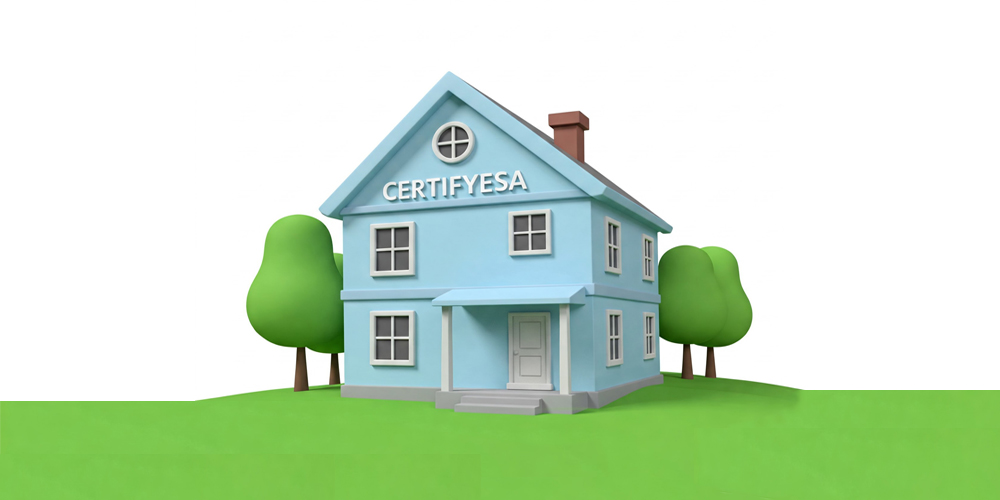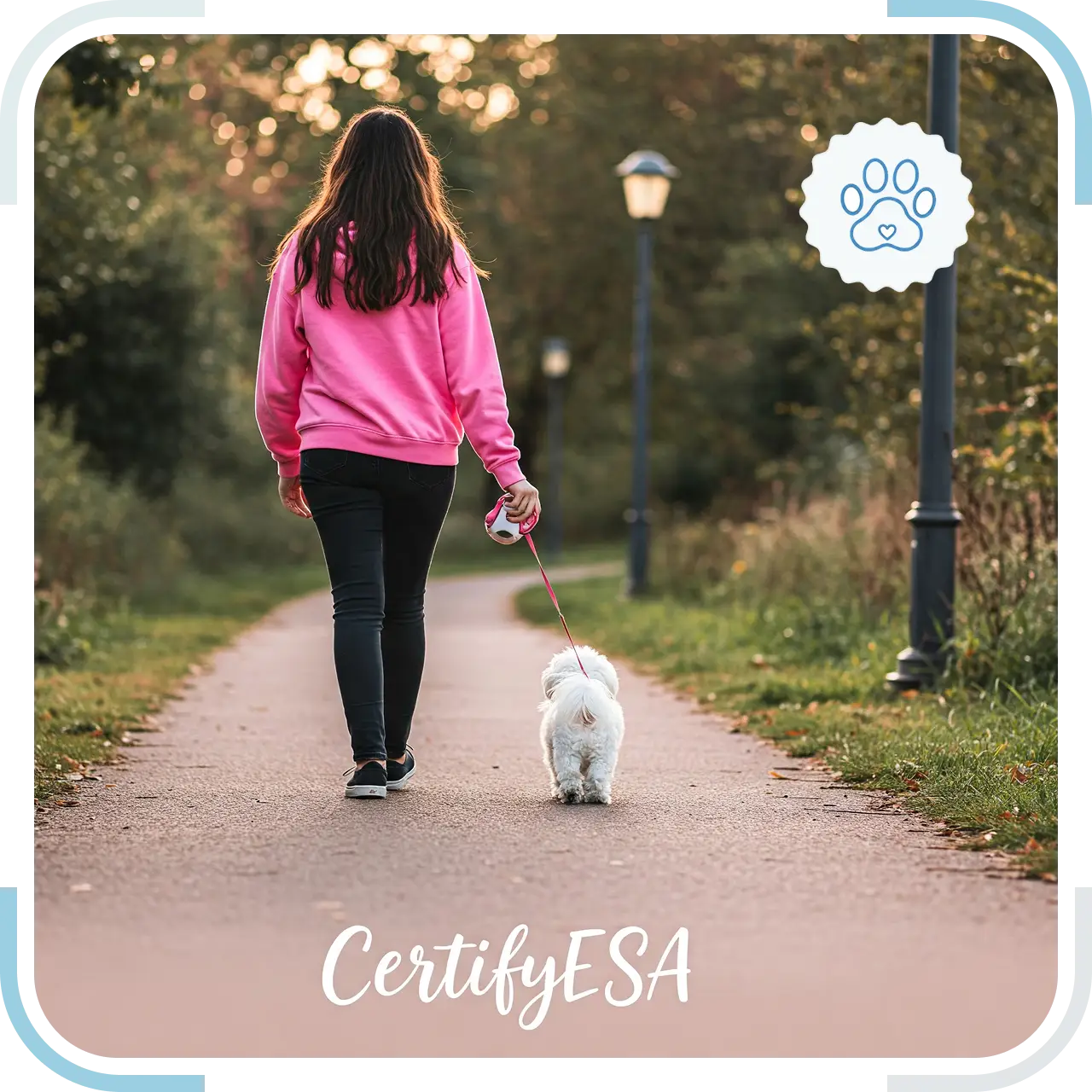Moving to a new home can be one of life’s most stressful experiences, and it’s not just humans who feel the impact. For an emotional support animal (ESA), a new environment can be disorienting and anxiety-inducing, potentially disrupting the very comfort and stability they provide to their handler. Ensuring a smooth transition for your ESA is crucial for their well-being and, by extension, for your continued emotional support.
At CertifyESA, we understand that your ESA is a vital part of your life, offering comfort and alleviating symptoms of mental and emotional disabilities. We are dedicated to helping you secure the legitimate documentation needed to live harmoniously with your companion. This blog post will provide comprehensive guidance on how to introduce your ESA to a new home, focusing on strategies to minimize stress and foster a sense of security for your beloved animal.
Why Moving Is Stressful for ESAs
Animals are creatures of habit and often thrive on predictability. A new home presents a multitude of changes that can be overwhelming for an ESA:
-
New Scents: Every surface carries unfamiliar smells from previous occupants, which can be confusing or alarming.
-
Unfamiliar Sounds: Different noises from new neighbors, street traffic, or even the building’s own creaks and groans.
-
Altered Layout: The familiar arrangement of furniture, exits, and quiet spots is gone.
-
Changes in Routine: Packing, moving, and unpacking can disrupt feeding times, potty breaks, and play schedules.
-
Handler’s Stress: Animals are highly attuned to human emotions. Your own stress during the move can be mirrored by your ESA.
Minimizing these stressors is key to helping your ESA adapt quickly and continue providing the emotional support you need.
Pre-Move Preparation: Setting the Stage for Success
Preparation is paramount to a smooth transition. Start planning for your ESA well in advance of moving day.
-
Secure Your ESA Letter: Ensure your ESA letter is current and legitimate. Present it to your new landlord as soon as your housing is confirmed, before moving in, to avoid any last-minute stress or complications. CertifyESA can help you obtain or renew this crucial document.
-
Visit the New Home (If Possible): If feasible, take your ESA to visit the new home a few times before moving day. This allows them to explore and get acquainted with the new smells and sounds in a low-pressure environment. For cats or smaller animals, bring a carrier to allow them to observe from a safe vantage point.
-
Maintain Routines: During the packing process, try to keep your ESA’s feeding, walking, and play routines as consistent as possible. This predictability will be a source of comfort amidst the chaos.
-
Pack an “ESA Essentials” Kit: Prepare a clearly labeled box or bag with everything your ESA will need immediately upon arrival:
- Familiar food and water bowls.
- Their favorite food (enough for a few days).
- Medications (if any).
- Comfort items: their bed, favorite blankets, toys, and a piece of your unwashed clothing.
- Leash, collar/harness, and waste bags.
- Litter box and litter (for cats).
- Cleaning supplies for accidents.
-
Keep Stress Low: Try to minimize your own stress. Your ESA will pick up on your emotions. Delegate tasks where possible, and take breaks to spend quality time with your ESA.
Moving Day Strategies: Minimizing Chaos
Moving day itself can be overwhelming. Strategic management of your ESA during this time is critical.
-
Designate a Safe, Quiet Space: On moving day, keep your ESA in a designated safe, quiet room away from the hustle and bustle of movers and open doors. This could be a bathroom, a spare room, or a large closet. Ensure they have their bed, water, and toys. Clearly label the door “Do Not Enter – ESA Inside.”
-
Consider a Pet Sitter or Boarding: For highly anxious ESAs, or to reduce your own stress, consider having a trusted friend, family member, or professional pet sitter care for your ESA during the peak moving hours. This could be for the entire day or even for a few days before and after the move.
-
Transport Safely:
- Dogs: Secure your dog safely in a well-ventilated crate or with a car harness during transport. Avoid allowing them to roam freely in the car, which can be dangerous.
- Cats/Small Animals: Keep cats and small animals in secure, comfortable carriers. Cover the carrier with a light blanket to reduce visual stimulation.
- Ensure proper ventilation and access to water for longer journeys. Take frequent breaks for potty and stretching for dogs.
-
First Arrival at the New Home:
- Before your ESA enters, try to set up their designated “safe zone” in the new home. This should be a quiet room with their bed, water, toys, and litter box (for cats).
- Bring your ESA into this pre-prepared space first. Keep them confined there while the rest of the moving happens, gradually introducing them to other rooms once the commotion has subsided and furniture is in place.
Post-Move Adaptation: Helping Your ESA Settle In
The first few days and weeks in the new home are crucial for helping your ESA adjust. Patience and consistency are key.
-
Establish Their “Home Base” Immediately: Even if they’re exploring other rooms, ensure their bed, food, water, and toys are consistently in one familiar spot that becomes their primary comfort zone.
-
Maintain Routine: As quickly as possible, re-establish your ESA’s regular feeding, walking, play, and potty schedules. Predictability reduces anxiety.
-
Familiar Scents: Spread blankets or toys with their familiar scent around the new home. You can also rub a clean cloth on your ESA and then wipe it on furniture to spread their scent and help them feel more at home.
-
Supervised Exploration: Allow your ESA to explore the new home gradually, always under supervision. For cats, you might introduce one room at a time. For dogs, keep them on a leash initially for walks through the house if they seem overwhelmed.
-
Safety First:
- Secure Hazards: Check for potential dangers like loose wires, open windows, or toxic plants.
- Escape Prevention: Be extra vigilant about doors and windows. Pets are more likely to try to escape when disoriented in a new environment. Ensure secure fencing for outdoor access.
- Introduce New Neighbors/Animals Slowly: If you have new neighbors with pets, arrange controlled, positive introductions once your ESA is settled.
-
Positive Reinforcement: Lavishly praise and reward your ESA for calm behavior, using the litter box/pottying outside, and exploring confidently. Keep interactions positive and reassuring.
-
Patience with Potty Training Regressions: Accidents can happen due to stress. Clean thoroughly, do not punish, and simply take your ESA out more frequently.
-
Spend Quality Time: Dedicate extra time for cuddling, playing, and reassuring your ESA. Your calm presence and affection are their biggest comfort. Engage in activities you both enjoy.
-
Manage Your Own Stress: Remember, your ESA will pick up on your emotional state. Practice self-care and try to remain calm and positive to project a sense of security to your animal.
When to Seek Professional Help
Most ESAs adjust to a new home within a few days to a few weeks. However, if your ESA exhibits prolonged or severe signs of stress, it might be time to consult a professional:
-
Excessive Destructive Behavior: Chewing furniture, scratching, etc.
-
Prolonged House-Soiling: Consistent accidents despite frequent potty breaks.
-
Extreme Hiding or Withdrawal: Refusing to come out or interact.
-
Loss of Appetite or Excessive Thirst: Significant changes in eating or drinking habits.
-
Aggression or Fear-Based Reactions: Unexpected growling, biting, or extreme fear towards new stimuli.
-
Constant Vocalization: Persistent barking, meowing, or other distressed sounds.
In such cases, consult your veterinarian to rule out medical issues, and then consider a certified professional dog trainer, a feline behaviorist, or a veterinary behaviorist who can provide tailored strategies to help your ESA adapt.
The Role of Your Legitimate ESA Letter
While not directly related to the physical act of moving, having a legitimate ESA letter from a licensed mental health professional (LMHP) is paramount for reducing your overall stress during a move. Knowing that your ESA is legally protected in your new housing:
-
Reduces Housing Anxiety: You won’t have to worry about “no pet” policies or pet fees, removing a huge source of stress.
-
Ensures Continued Support: You have the peace of mind that your essential companion can remain with you, providing the very emotional support you need during a turbulent time.
CertifyESA connects you with qualified LMHPs to ensure your documentation is current and compliant, making your move significantly less stressful.
Conclusion: A Peaceful New Beginning
Moving with an ESA can be a challenging but ultimately rewarding experience. By taking proactive steps, managing the moving day chaos, and providing consistent reassurance and routine in your new home, you can significantly ease your ESA’s transition. Remember that your ESA’s comfort and emotional stability are directly linked to their ability to provide you with the support you need.
At CertifyESA, we believe in supporting both you and your emotional support animal. By understanding and implementing these strategies for a smooth move, coupled with the security of legitimate ESA documentation, you can turn a stressful life event into a peaceful new beginning for everyone involved. Your harmonious new home awaits.
References
U.S. Department of Housing and Urban Development. (2020, January 28). Assessing a Person’s Request to Have an Animal as a Reasonable Accommodation Under the Fair Housing Act. FHEO Notice: FHEO-2020-01.





